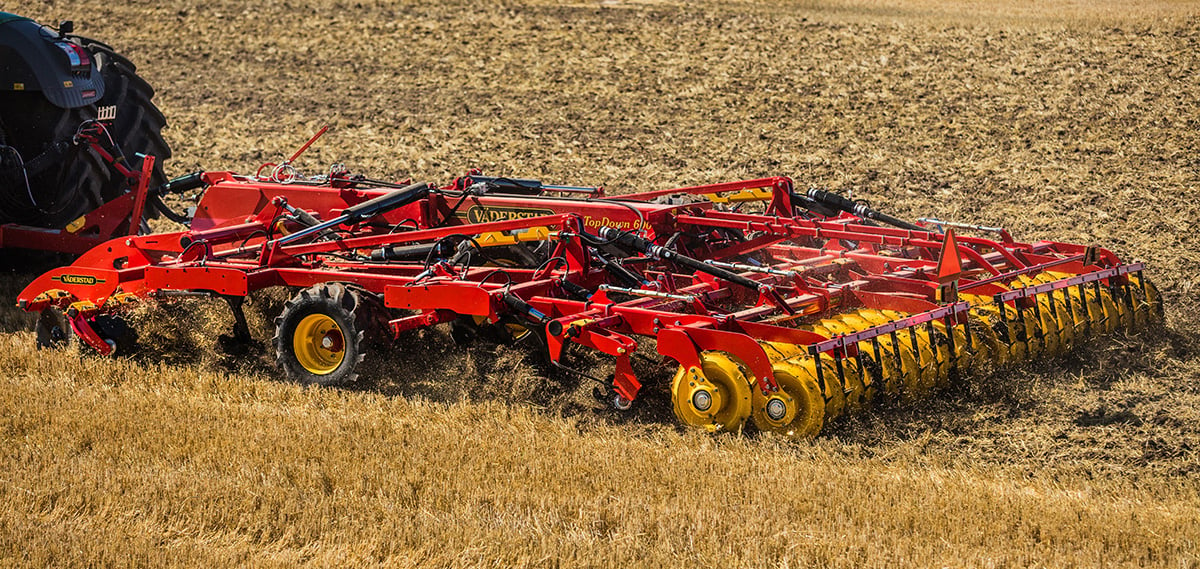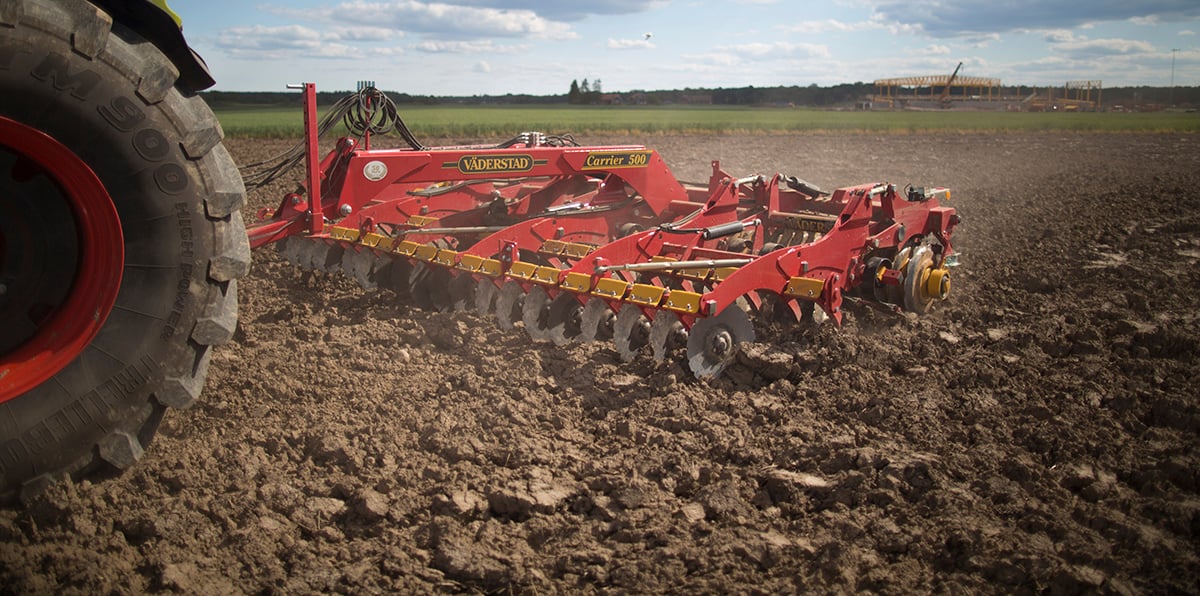
Minimum tillage
Ploughless tillage is usually called reduced tillage and while this is not always completely correct, it reflects the intentions of such cultivation systems rather well: to reduce tillage compared with ploughed systems.
Deep reduced tillage
Deep tillage with a cultivator is often used on light soils that require loosening:
- when large amounts of harvest residues have to be mixed into the soil
- before compaction-sensitive crops such as oilseeds, peas and sugar beet
- when wheel tracks and compaction damage need to be repaired
A combination cultivator such as TopDown or 483 Chisel Pro can be used for one or two passes or alternatively a field cultivator such as the QX2 and XL2, often in combination with a disc cultivator such as Carrier.
Deep tillage gives a coarser finish than shallow cultivation, so several passes can be required on heavy soils.
When deep cultivation is carried out within the same depth range as conventional tillage (4-6 inches or deeper), the costs and fuel consumption per acre are relatively high, approaching those of conventional tillage systems in many cases. The most important factor in favour of deep reduced tillage compared with conventional tillage is the considerably higher capacity per hour. The decreased risk of erosion and crusting as a result of the straw residues on the surface is another advantage.

Shallow reduced tillage
For shallow reduced tillage, a disc cultivator such as Carrier is the type of machine most commonly used today. Cultivators with vibrating tines such as XL2 and certain rigid tine cultivators are also used, especially when the working depth exceeds 2-3 inches. When relatively large amounts of straw have to be mixed into a limited volume of soil, there is a strong need for pre-treatment of the harvest residues if these are not removed.
Shallow reduced tillage gives savings in terms of both costs and time, especially on heavy soils.
General effects of reduced tillage
Continuous shallow tillage can give rise to a dense layer in the soil that is similar to a hard pan and therefore most reduced tillage systems alternate between shallow and deep cultivation. In such cases, the deeper cultivations are often carried out ahead of compaction-sensitive crops such as oilseeds, peas and sugar beet. Light soils often have a weaker structure than clay soils and require deeper cultivation to maintain crop yields.
Straw-borne diseases are of course a factor to consider in reduced tillage and a good crop rotation is regarded as essential for success.
Volunteer plants are another major problem in reduced tillage. In good conditions they can be dealt with by mechanical cultivation, but in wet conditions they are difficult to control without the use of chemicals. Crop rotation is an important factor in this case too, both in terms of tillage outcome and also as regards the control of weeds and volunteers.